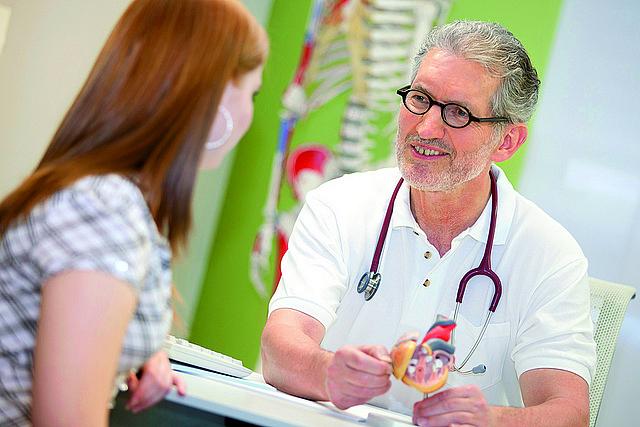Predictive Prevention: Changing health habits starts face to face

The idea that an email from a physician or a hospital could markedly change people’s behavior and ultimately make them healthier seems like a fantasy.
Yes, health insurance companies and health care providers now have the power to bug you about quitting smoking or eating better. But if the futuristic data-mining experiment matching consumer information – such as credit card records and social media posts – to a person’s health profile is going to work, it has to find a way into an old-fashioned conversation. It has to become part of physician-patient conversations about diet, exercise, weight gain, medication adherence, and a range of behavior patterns. It has to motivate people to change. In the typical time-pressed doctor’s visit, that's a tall order.
Here are three things to consider when covering this trend as it expands beyond the experimental stage:
Tech can’t replace talk. In a review piece on patient-doctor communication for the journal Medical Clinics of North America, Dr. Carol Teutsch with the UCLA Health Care Institute wrote that “it is unlikely that any future advances will negate the need and value of compassionate and empathetic two-way communication between clinician and patient.” Study after study makes this point. In health journalism, we love to write about robots and DNA and other aspects of health care that seem cutting edge. But it is still a physician operating a robot, a physician making decisions and recommending action based on your genetic tests. Most of the health care that happens today involves human-to-human interaction. Using consumer data to improve a patient’s health is no different.
Communication begins with eye contact. The importance of non-verbal communication in any encounter is massive. The content of what you are saying actually matters less than how you say it, how you look when you are saying it, your volume, your intonation, and your eye contact. The Texas Medical Association has an interesting educational guide for dealing with difficult patients. One of the keys to success, the piece says, is talking face to face and listening:
Eye contact is especially important in the world of electronic medical records. It is important for patients to complete their train of thought, and they should be allowed to do so without interruptions from the physician. It is perfectly okay to ask questions at appropriate times if the physician needs clarification. When the patient has finished talking, the physician should restate succinctly and with clarity the patient’s concerns so that the patient understands that the physician was listening. After restating the patient’s concerns, the physician then should lead into solutions and a treatment plan.
The best new data modeling can’t replace good bedside manner.
Great care must come first. So you are diabetic. And you are overweight. And you still eat at Dairy Queen for dinner at least three times a week. Let’s say your doctor knows this because she can see your credit card transactions. And she sits you down and talks with you about this face to face, giving you specific tips on fighting the urge to overeat and getting into the habit of making healthy meals at home. You are listening, even taking notes. “I can do this,” you think.
But what if she also made you wait for an hour to see her, lost your vaccination records so you had to get an unnecessary round of shots before your trip to Mexico, and prescribed the wrong drug for your daughter’s asthma. Suddenly your confidence in your doctor and your willingness to do what she suggests disappear. Consistently good care matters. That’s what Hyo Jung Tak at the Department of Health Management and Policy at University of North Texas Health Science Center and colleagues found in a new study.
They analyzed household survey data from more than 71,500 people in the U.S. to look for links between patient ratings of care and overall patient satisfaction. They wrote:
Thoroughness of care was the strongest determinant of patient satisfaction, followed by physician listening and explanation. Especially with patients’ improved access to current medical information, it is important for physicians to recognize that excellent communication cannot serve as a substitute for high-quality, thorough care.
So we know that consumer data can provide powerful new information to health care providers. We know that for it to be effective, though, it must be communicated to patients face to face. And we know that it has to be done in the context of thorough health care overall.
Who will do all this work? Not a bunch of brand new physicians coming out of technically up-to-date medical schools working to integrate data into care. Most physicians came into practice before email was even in regular use. I’ll write about how they might be brought up to speed in my next post.
Photo by wr52351 via Flickr.

